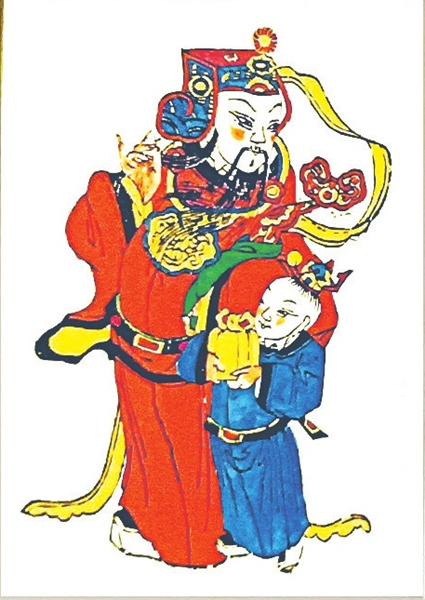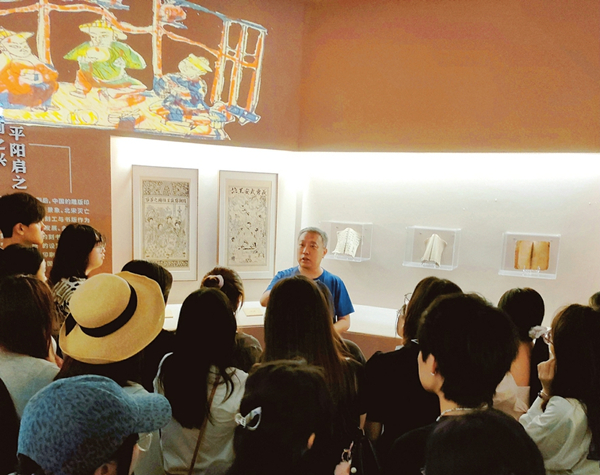Pingyang woodblock New Year paintings gain new vigor
Updated: 2024-05-24
Pingyang woodblock New Year paintings, an intangible cultural heritage of North China's Shanxi province, originated in the Sui Dynasty (581-618) and Tang Dynasty (618-907) and reached their peak during the Ming Dynasty (1368-1644) and Qing Dynasty (1644-1911), but later saw a decline.

A traditional Pingyang woodblock New Year painting. [Photo/Shanxi Daily]
In the 1980s and 1990s, Pingyang woodblock New Year paintings experienced a revival, with sales accounting for 15 percent of the national market. In 2008, the woodblock paintings were selected as national intangible cultural heritage items.
Pingyang woodblock New Year painting is a traditional art that integrates different themes, lines, and colors with woodblock carving. It is used for door paintings, screen wall paintings, doorstep paintings, and window paintings, among others. Themes involve historical stories, myths and legends, folk customs, and flowers and birds.
"I hope more young people can participate in the preservation of woodblock New Year paintings, bringing them more in tune with the new era," said Zhao Guoqi, a representative practitioner of Pingyang woodblock New Year paintings.

Zhao Guoqi introduces Pingyang woodblock New Year paintings. [Photo/Shanxi Daily]
In recent years, Zhao has worked hard to achieve a balance between traditional craftsmanship and modern technology. On the one hand, he has manually printed 36 kinds of traditional woodblock paintings while teaching his apprentices to ensure that old-fashioned traditional patterns are printed using traditional techniques; on the other hand, he combines the traditional New Year paintings with current popular culture and modern trends.
Various cultural and creative products have been developed for Pingyang woodblock New Year paintings, by printing the paintings on water cups, keychains, clothes and hats. This has brought the intangible cultural heritage into the lives of ordinary people. Some of the products created by Zhao are exported to countries such as Italy, Japan, South Korea, and the United States.



